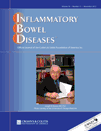Comparison of medical costs among patients using adalimumab and infliximab: A retrospective study (COMPAIRS)†
Pharmaceutical industry support provided by Abbott Laboratories, Abbott Park, IL.
Abstract
Background:
Anti-tumor necrosis factor (TNF) medications have similar efficacy in Crohn's disease (CD), but have not been compared in the real world. This study compared health costs and utilization for patients with CD newly initiating anti-TNF therapy with adalimumab (ADA) or infliximab (IFX) by using insurance data.
Methods:
CD patients initiating ADA or IFX therapy were identified from the MarketScan database. ADA and IFX groups were matched using a propensity score. The primary endpoint was direct costs of healthcare for the 6 months following initiation. The secondary endpoints compared healthcare utilization between groups.
Results:
After propensity matching, characteristics were similar between the ADA (n = 623) and IFX (n = 623) groups. During the 6-month interval following anti-TNF initiation, healthcare costs were significantly lower for ADA compared with IFX. Total healthcare cost was $18,885 for ADA and $24,355 for IFX, a difference in cost of $5,470 (P < 0.0001). CD-related costs made up the majority of the costs: $16,454 for ADA and $22,316 for IFX (P < 0.0001). The largest difference in cost was seen in outpatient visits: $2,082 difference between the two groups (P < 0.0001). Both all-cause and CD-related hospitalization decreased for both ADA and IFX groups. Emergency room and hospitalization use in the 6-month follow-up period was not statistically different between groups, although numerically slightly higher in the IFX group.
Conclusions:
Patients with CD using ADA had lower healthcare costs than patients using IFX; this difference was partly driven by outpatient medical costs. (Inflamm Bowel Dis 2012;)




